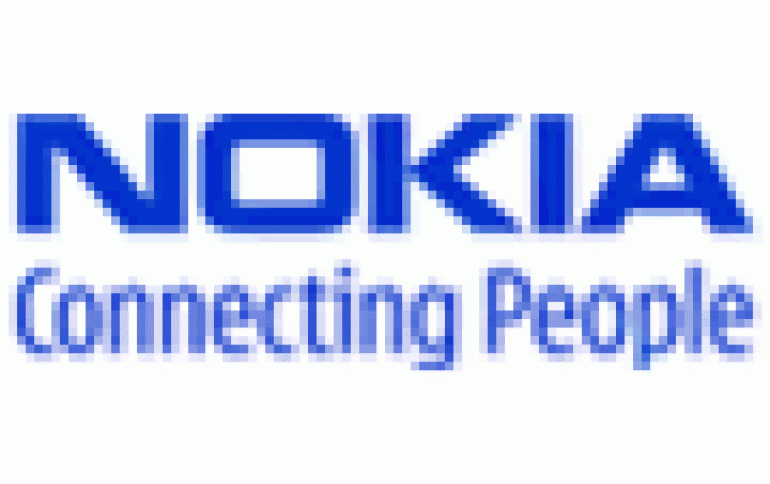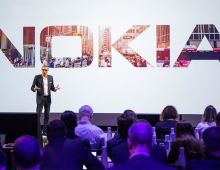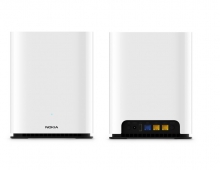
Nokia to implement TI's integrated single-chip solution for mobiles
Nokia and Texas Instruments announced the cooperation whereby Nokia will incorporate a single-chip solution based on TI's Digital RF Processor (DRP) technology to its future mobile phones. This cooperation will make Nokia's handsets cheaper, especially in high-volume entry markets.
TI announced its intention to integrate the bulk of handset electronics on a single chip (including digital baseband, SRAM, logic, RF, power management and analog functions) already in 2002. They promiced to sample the first real product in 2004. The first version of the single-chip solution, which sampled in December 2004 and was developed through TI's advanced 90nm CMOS manufacturing technology, targets the mass-market voice-centric marketplace.
The Digital RF Processor technology combines TI΄s years of signal processing architecture expertise with advanced semiconductor manufacturing capability to perform analog functions with low power, digital CMOS logic. Since large blocks of CMOS logic can now operate at multi-GHz frequencies, sampled-data processing techniques, switched-capacitor filters, oversampling converters, and digital signal processors can take over the role of analog amplifiers, filters, and mixers. Rather than an inefficient implementation of analog blocks in a digital process technology, with the DRP the analog signal is oversampled and processed in the digital domain. Since radio signals at the antenna are always analog, a small amount of analog processing is included in the DRP between the input and the first sampling function. Once in the sampled-data domain, digital signal processing takes over.
The RF section of a cell phone can occupy up to 50 percent of the printed circuit board, space that is required for today's advanced feature sets. Color displays, cameras, GPS location technology, Bluetooth personal area networking, and WLAN connectivity for high-speed local-area data access, as well as application processors and additional memory to support digital audio and video, games, and PDA applications, are increasingly common. In addition to reducing the number of components required to implement RF, a digital design scales readily with Moore's law and enables simple modification of key RF parameters to enhance performance through software rather than system or IC redesign.
By adopting TI's DRP-based single-chip technology for its future mobile phones, Nokia intends to increase its proven innovation and leadership position in the marketplace. Cost, size, power and performance optimizations are crucial, especially for high-volume entry-level mobile phones. The combination of Nokia's world-leading expertise in mobile devices with TI's DRP based single-chip technology will take this optimization to a higher level. As a first step, Nokia phones based on the single-chip solution will target the entry-level mobile phone market, particularly in high-growth regions such as India and China.
Based on TI's innovative DRP technology, the single-chip solution reinforces the company's clear edge in integration, furthering TI's and its customers' competitive positions. This pioneering approach to wireless chip design applies digital technology to simplify radio frequency processing, which significantly reduces board space, extends battery life, and makes for a more cost-effective, powerful, versatile mobile phone. The world's first GSM cellular phone call using TI's DRP technology was made last February in TI's labs, proving the technology.
This latest advancement joins TI's already sophisticated and integrated DRP technology roadmap. The BRF6100 Bluetooth single chip, announced in June 2002, was the first implementation of TI's DRP technology, followed by the BRF6150 and the BRF6300. TI's integrated wireless technology roadmap also includes a single chip solution for digital TV for mobile phones, as well as future single chip solutions for GPS, wireless LAN, UMTS and other air interfaces, paving the way for further integration with the cellular modem and TI's OMAP processors.
The Digital RF Processor technology combines TI΄s years of signal processing architecture expertise with advanced semiconductor manufacturing capability to perform analog functions with low power, digital CMOS logic. Since large blocks of CMOS logic can now operate at multi-GHz frequencies, sampled-data processing techniques, switched-capacitor filters, oversampling converters, and digital signal processors can take over the role of analog amplifiers, filters, and mixers. Rather than an inefficient implementation of analog blocks in a digital process technology, with the DRP the analog signal is oversampled and processed in the digital domain. Since radio signals at the antenna are always analog, a small amount of analog processing is included in the DRP between the input and the first sampling function. Once in the sampled-data domain, digital signal processing takes over.
The RF section of a cell phone can occupy up to 50 percent of the printed circuit board, space that is required for today's advanced feature sets. Color displays, cameras, GPS location technology, Bluetooth personal area networking, and WLAN connectivity for high-speed local-area data access, as well as application processors and additional memory to support digital audio and video, games, and PDA applications, are increasingly common. In addition to reducing the number of components required to implement RF, a digital design scales readily with Moore's law and enables simple modification of key RF parameters to enhance performance through software rather than system or IC redesign.
By adopting TI's DRP-based single-chip technology for its future mobile phones, Nokia intends to increase its proven innovation and leadership position in the marketplace. Cost, size, power and performance optimizations are crucial, especially for high-volume entry-level mobile phones. The combination of Nokia's world-leading expertise in mobile devices with TI's DRP based single-chip technology will take this optimization to a higher level. As a first step, Nokia phones based on the single-chip solution will target the entry-level mobile phone market, particularly in high-growth regions such as India and China.
Based on TI's innovative DRP technology, the single-chip solution reinforces the company's clear edge in integration, furthering TI's and its customers' competitive positions. This pioneering approach to wireless chip design applies digital technology to simplify radio frequency processing, which significantly reduces board space, extends battery life, and makes for a more cost-effective, powerful, versatile mobile phone. The world's first GSM cellular phone call using TI's DRP technology was made last February in TI's labs, proving the technology.
This latest advancement joins TI's already sophisticated and integrated DRP technology roadmap. The BRF6100 Bluetooth single chip, announced in June 2002, was the first implementation of TI's DRP technology, followed by the BRF6150 and the BRF6300. TI's integrated wireless technology roadmap also includes a single chip solution for digital TV for mobile phones, as well as future single chip solutions for GPS, wireless LAN, UMTS and other air interfaces, paving the way for further integration with the cellular modem and TI's OMAP processors.





















